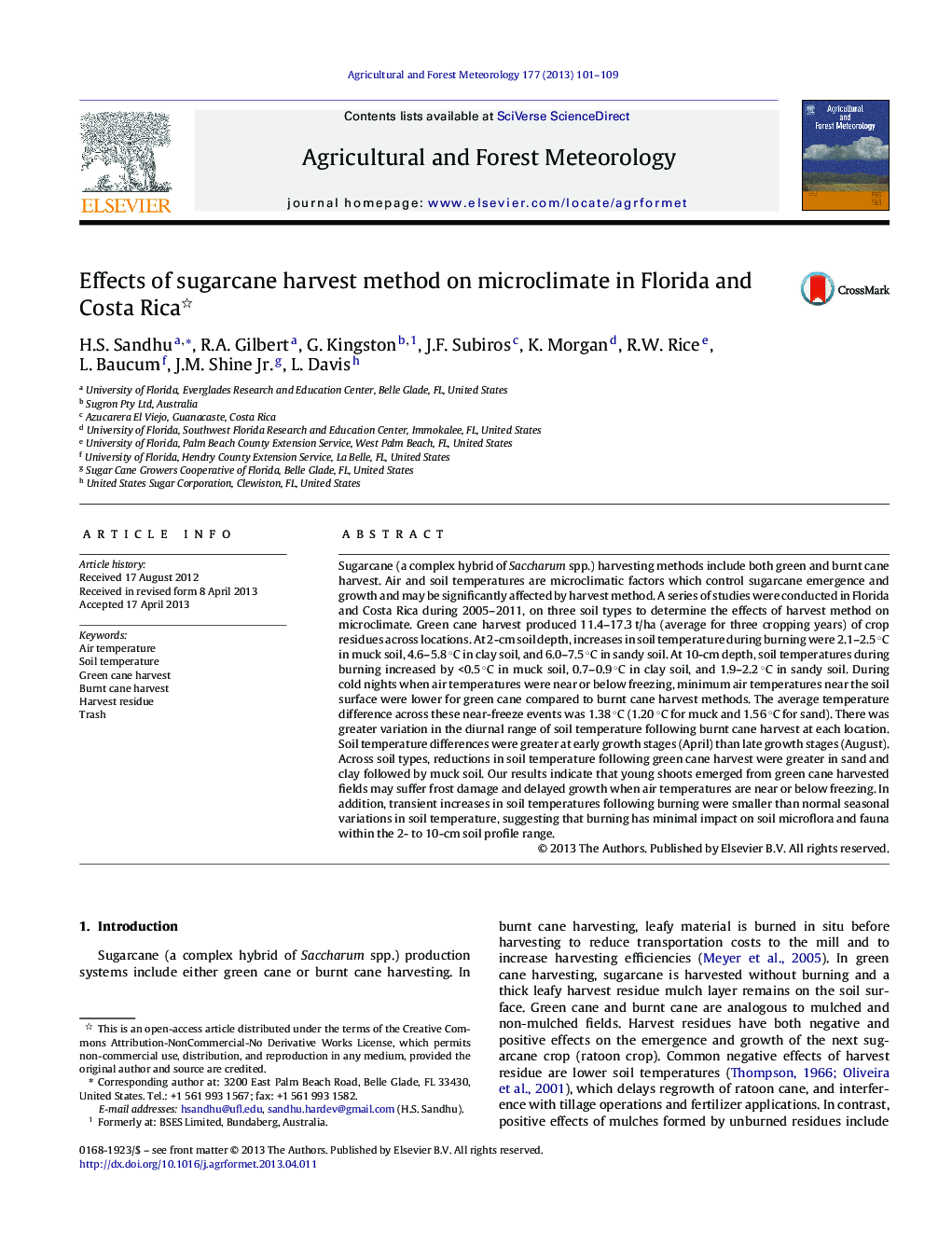| کد مقاله | کد نشریه | سال انتشار | مقاله انگلیسی | نسخه تمام متن |
|---|---|---|---|---|
| 6537891 | 158349 | 2013 | 9 صفحه PDF | دانلود رایگان |
عنوان انگلیسی مقاله ISI
Effects of sugarcane harvest method on microclimate in Florida and Costa Rica
ترجمه فارسی عنوان
اثرات روش برداشت نیشکر بر روی میکرومتری در فلوریدا و کاستاریکا
دانلود مقاله + سفارش ترجمه
دانلود مقاله ISI انگلیسی
رایگان برای ایرانیان
کلمات کلیدی
دمای هوا، دمای خاک، برداشت محصول نیشکر سبز، برداشت محصول نیشکر سوخته، بقای برداشت، زباله ها،
موضوعات مرتبط
مهندسی و علوم پایه
علوم زمین و سیارات
علم هواشناسی
چکیده انگلیسی
Sugarcane (a complex hybrid of Saccharum spp.) harvesting methods include both green and burnt cane harvest. Air and soil temperatures are microclimatic factors which control sugarcane emergence and growth and may be significantly affected by harvest method. A series of studies were conducted in Florida and Costa Rica during 2005-2011, on three soil types to determine the effects of harvest method on microclimate. Green cane harvest produced 11.4-17.3 t/ha (average for three cropping years) of crop residues across locations. At 2-cm soil depth, increases in soil temperature during burning were 2.1-2.5 °C in muck soil, 4.6-5.8 °C in clay soil, and 6.0-7.5 °C in sandy soil. At 10-cm depth, soil temperatures during burning increased by <0.5 °C in muck soil, 0.7-0.9 °C in clay soil, and 1.9-2.2 °C in sandy soil. During cold nights when air temperatures were near or below freezing, minimum air temperatures near the soil surface were lower for green cane compared to burnt cane harvest methods. The average temperature difference across these near-freeze events was 1.38 °C (1.20 °C for muck and 1.56 °C for sand). There was greater variation in the diurnal range of soil temperature following burnt cane harvest at each location. Soil temperature differences were greater at early growth stages (April) than late growth stages (August). Across soil types, reductions in soil temperature following green cane harvest were greater in sand and clay followed by muck soil. Our results indicate that young shoots emerged from green cane harvested fields may suffer frost damage and delayed growth when air temperatures are near or below freezing. In addition, transient increases in soil temperatures following burning were smaller than normal seasonal variations in soil temperature, suggesting that burning has minimal impact on soil microflora and fauna within the 2- to 10-cm soil profile range.
ناشر
Database: Elsevier - ScienceDirect (ساینس دایرکت)
Journal: Agricultural and Forest Meteorology - Volume 177, 15 August 2013, Pages 101-109
Journal: Agricultural and Forest Meteorology - Volume 177, 15 August 2013, Pages 101-109
نویسندگان
H.S. Sandhu, R.A. Gilbert, G. Kingston, J.F. Subiros, K. Morgan, R.W. Rice, L. Baucum, J.M. Jr., L. Davis,
